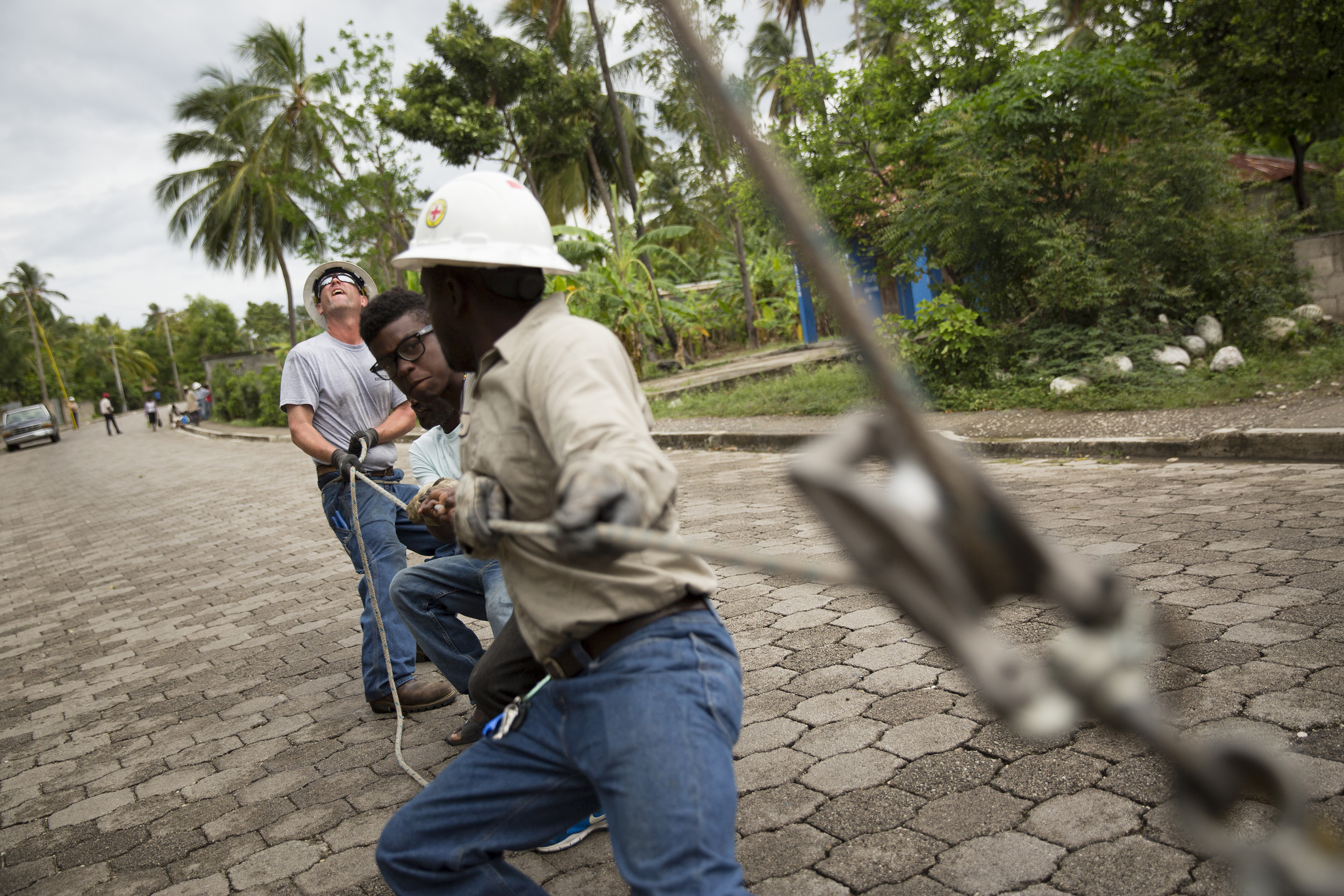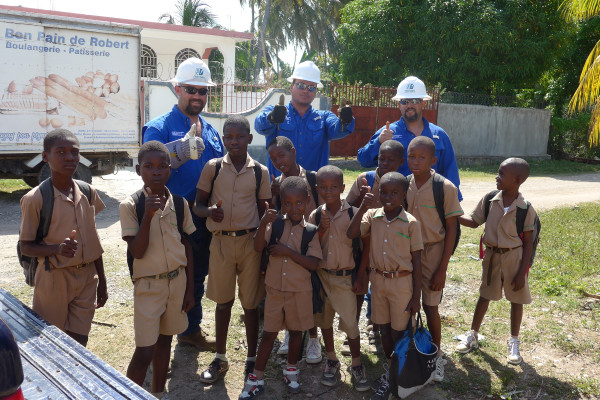
Haiti ranked No. 20 on the United Nations’ 2014 list of least-developed countries, a list it’s been on since 1971. So anything that improves the quality of life is welcome — especially bringing electricity to those without.
NRECA International is making major strides toward lighting communities in southwest Haiti. In 2013, it began establishing the region’s first electric cooperative, Cooperative Electrique de l’Arrondisement des Côteaux, or CEAC. This September, CEAC held lighting ceremonies in the towns of Côteaux and Roche-à-Bateau, though getting to that point wasn’t easy.
“When we started the co-op down here, we couldn’t find a single lineman that could climb in this area,” recalls Dana Brosig, NRECA International project manager. “We have now trained four local linemen to climb and work alongside our volunteers. We have also brought two linemen from a cooperative in Bolivia to work alongside and train the teams. It can be a challenge with people speaking English, Creole, and Spanish, but they do a lot of charades and have translators when that doesn’t work.”

“Everyone was very excited,” Brosig says. “They have been waiting years for this to happen. They have anxiously watched the poles, conductor, and transformers go up in their towns.”On September 10, the hard work paid off when the lights came on in Côteaux.
CEAC has signed up nearly 800 members throughout the three towns.
And you can say this about the NRECA International folks: They mean business.
“Very often in Haiti, the government or politicians will install poles and possibly a conductor over a number of years to show people they are bringing power, but then they stop there,” Brosig says. “When the people saw the transformers and streetlights as well as the installation of the generators and solar panels, they knew that they were actually going to have power, and people started getting excited.”

Brosig says turning on streetlights was “a bit of a celebration intended to encourage people to get their houses wired for electricity so that we can connect more houses.” By late September, more than 80 houses in Côteaux were ready to accept electricity. Nearly half were connected. The thinking is that people will take steps to get electricity once they see the lights on in their neighbors’ homes.
CEAC has the potential to serve 1,600 member-consumers in Côteaux, Roche-à-Bateau, and Port-à-Piment, where a new line has been constructed and system upgrades are in progress. The co-op uses prepaid metering, and unlike in the United States, it’s not an option.
“One reason we decided to go this way is that Haitians are not used to paying bills at the end of the month and, in this area, are not used to having or paying for electricity,” Brosig says. “We didn’t want to connect them and have them run up a large bill that they couldn’t pay. The prepaid units give them the option of paying in small increments throughout the month.”

To generate power, CEAC uses a solar-diesel hybrid system. “The term ‘hybrid’ comes from the fact that the solar and diesel generator run in parallel,” Brosig explains. “The solar PV [photovoltaic] plant is configured to always output the maximum power available at any point in time during the day, and the diesel is used to make up the power deficit between the PV output and the load.” At night, the grid will be powered by generators.
Nearly 40 volunteer U.S. linemen helped build the CEAC system over the past year, but now different types of volunteers are needed: accountants, customer service reps, and other office personnel who can work with the general manager, staff, and nine-member elected board.
Brosig has been in Haiti nearly four years, half of which has been spent on this project, and “long enough that I have quite a lot of friends.” She learned Creole, which makes it easier to communicate.
“It is fun living in a small town and seeing people you know everywhere you go. Côteaux is a very nice seaside town and has a lot of potential to grow and prosper with electricity,” Brosig says. “The people in this area are more than ready.”
Photo Gallery
This story was originally published in RE Magazine.